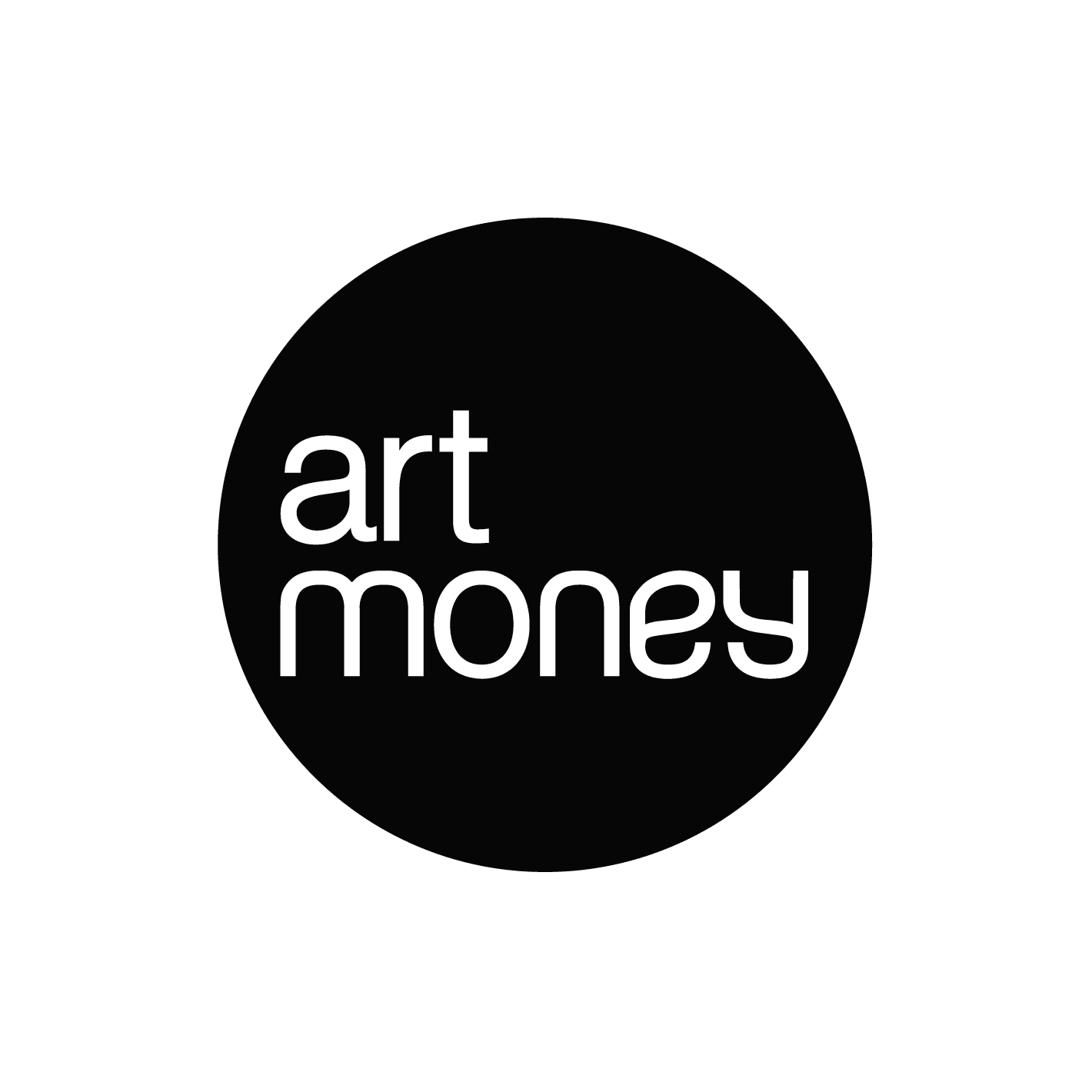Welcome to the Aleph Contemporary Journal—a curated space dedicated to the exploration and celebration of contemporary art. Here, you’ll find thoughtful articles delving into the philosophies of modern artistic practices, insights into curation, and reflections on cultural trends shaping the art world today. Our blog aims to inspire, challenge, and connect art enthusiasts, collectors, and creatives alike, offering fresh perspectives on what it means to engage with art in the 21st century. Join us as we explore the ever-evolving conversation between artists, their work, and the wider world.
-

Finding Order in Chaos
Nadia Ryzhakova’s “Ciphers of Nature” at Aleph Contemporary7–29 November 2025 | Aleph Contemporary, Stroud
“There is a haunting if deceptive modernity in the notion… that arteries and the branches of trees, the dancing motion of the microcosm and the solemn measures of the spheres… are all ciphers.”
— George Steiner, Lifelines -

Where Sky Meets Land:
The Luminous World of Victoria Orr EwingIn an intimate conversation for Aleph Contemporary, conducted by her daughter Talia, Victoria Orr Ewing opens a window onto the inspirations and philosophy behind her landscapes. Her paintings, suffused with stillness and timelessness, often emerge from mist, rain, and fading light—worlds that invite contemplation and a quiet reverence for the natural world.
-
 'Landscape in Our Midst'Aleph Contemporary - Station Road, Stroud, GL5 3AR
'Landscape in Our Midst'Aleph Contemporary - Station Road, Stroud, GL5 3ARDates - Fri 17th Oct - Mon 3rd Nov 2025
In conjunction with the Autumn Arts Trail, Aleph Contemporary presents a new body of work by Deborah Cox - Open daily 10am–4pm except Tuesdays, + AA Trail times.
-

Angie Spencer: A River Runs Through It
Nicholas Wells Visits Angie Spencer's StudioAmid the quiet hills of Stroud, painter and classical violinist Angie Spencer has been quietly composing a symphony of water—rendered not only in oil on canvas, but in movement and light. Her upcoming exhibition, WATER WAYS, at Aleph Contemporary, draws us into a world where the subtleties of rivers, seas, and still ponds are not merely seen, but transposed on canvas. This is not simply landscape painting; it is lived experience—translated through brushstroke, bow, and a finely tuned sensitivity to the abundant nature of Gloucestershire and beyond. In the essay below, Nicholas Wells reflects on Spencer’s unique artistic practice, her musical intuition, and the elemental pull of water that now shapes both her artistic practice.
-
The Illusion of Colour
Perception, Science, and the Artist’s InterpretationWhat does it really mean when we say a rose is red? Colour is not an inherent quality of objects but a phenomenon of light, perception, and interpretation. Scientists, philosophers, and artists have long debated the nature of colour, from Goethe’s theories to modern neuroscience. This article explores how we perceive colour, why language struggles to define it, and how artists use paint to communicate beyond words.
-
Enzo Marra's canvases vibrate with an almost sculptural intensity, where thick layers of paint become both medium and message. Drawing inspiration from artists like Philip Guston and Leon Kossoff, while critically engaging with the commodification of art, Marra’s work is both deeply personal and strikingly universal. This essay explores the philosophy behind his practice, his rejection of artistic stagnation, and his ongoing search for that rare, perfect painting.
-
Sean Parker is a painter, writer, and political commentator whose work blurs the boundaries between art and critique. Known for his layered, Cubist-inflected portraits and bold abstract compositions, his paintings deconstruct and reconstruct imagery, challenging traditional representation. His subjects—ranging from cultural icons like Ricky Gervais and Christopher Hitchens to deeply personal figures—are chosen for their integrity, influence, and presence. Alongside his artistic practice, Parker is an outspoken voice in contemporary political discourse, with a significant X (formerly Twitter) following and a reputation for tackling miscarriages of justice, free speech, and cultural politics. His work resists easy categorisation, existing at the intersection of visual art, independent thought, and social commentary.
-

Vanessa Wilson: The Departure Lounge
A Painter in MotionVanessa Wilson is an artist whose work navigates the shifting boundaries between memory, movement, and place. Rooted in both personal history and philosophical inquiry, her paintings capture the fleeting nature of transition—figures poised on the edge of departure, landscapes dissolving into abstraction, colour as an emotional register of time and experience. With a career shaped by constant motion across continents, Wilson’s work is a meditation on liminality, belonging, and the spaces we pass through but never truly leave behind. Her upcoming 2025 exhibition, The Departure Lounge at Aleph Contemporary, explores these themes with a nuanced, painterly language that is both instinctive and deeply considered. -
Lloyd Durling: Walking Through Memory and Form
Interview by Nicholas Wells for Aleph ContemporaryLloyd Durling’s work exists in the liminal space between memory, landscape, and abstraction. Rooted in his psychogeographic explorations, his paintings channel the traces of history—medieval wall paintings, ancient ruins, and unseen forces—through layered mark-making and spectral palettes. His influences stretch across literature, philosophy, and material culture, rejecting photographic documentation in favor of lived experience and recall. Recognised by institutions such as the Pollock-Krasner Foundation, Durling’s practice continues to evolve, shifting in scale while remaining deeply attuned to the hidden narratives embedded within place and time. -
Beauty and Its Representation in Art
The Struggle Against ArtificialityIn an age where artificiality dominates artistic expression, the essence of true beauty is increasingly lost. The unique presence of an original artwork, with its depth, texture, and history, is diminished when replaced by digital reproductions and mass-produced imitations. Walter Benjamin’s concept of the ‘aura’—the irreplaceable authenticity of a piece—is vanishing as convenience takes precedence over meaningful engagement. This shift reflects a broader cultural trend where the superficial is mistaken for the sublime, and where beauty, once revered for its depth and imperfection, is now flattened into mere aesthetic decoration. To reclaim beauty, we must resist this erosion, embracing art that demands contemplation, effort, and an authentic connection.
-

Finding Balance in Motion at Congruent Sym
Marek Tobolewski's Meditative Exploration of Symmetry and StillnessMarek Tobolewski, a celebrated British contemporary artist, prepairs for his forthcoming exhibition, Congruent Sym, at Aleph Contemporary in Stroud. Renowned for his mastery of symmetry and fluid forms, Tobolewski invites viewers into a meditative exploration of balance, stillness, and transformation. Through meticulously crafted drawings and paintings, his work delves into the interplay between control and spontaneity, structure and fluidity. This journal examines Tobolewski's practice, artistic philosophy, and the themes that define his visual language, offering insights into the alluring meditative quality of his creations. -
The Influence of Literature and Philosophy on Modern Art
AN ENQUIRY into the Works of Kafka, Joyce, Proust, and BeyondThe intersection of literature, philosophy, and art has produced some of the most thought-provoking and influential works in modern culture. Writers like Franz Kafka, James Joyce, Marcel Proust, and Samuel Beckett not only reshaped the narrative techniques of their time but also engaged deeply with the existential, absurdist, and phenomenological questions of human experience. These authors, alongside philosophers such as Jean-Paul Sartre, Albert Camus, and Friedrich Nietzsche, offered profound insights into the nature of identity, alienation, time, and the search for meaning in an often indifferent world. This essay explores how their works have left an indelible mark on visual artists and contemporary culture, illustrating the enduring relevance of their themes in both literary and artistic expression.
-

Nature and Observation as Creative Catalysts
Gardens, Abstraction, and Art: Exploring Nature and CreativityGardens have long been spaces of contemplation, creativity, and transformation, bridging the natural world with human imagination. From ancient enclosed sanctuaries to contemporary landscape design, they have inspired artists to explore abstraction, form, and the sensory experience of nature. At Aleph Contemporary, we celebrate the intersection of gardens and art, particularly in the realm of abstraction. Many of the artists we work with draw upon the organic rhythms, colours, and textures of plants and landscapes, translating them into works that capture the essence of nature beyond representation. Like a carefully composed garden, abstract art plays with space, movement, and emotion, offering a way to engage with nature through perception and feeling rather than direct depiction.
-
Creating Art Through Crisis:
The Role of Abstract Art in Difficult TimesAbstraction has always been a powerful means of expressing the ineffable, especially in times of upheaval. From Mark Rothko’s luminous meditations on the void to Cy Twombly’s raw, instinctive gestures, abstract art captures the emotional and spiritual complexity of human existence. This legacy continues in "Sleepwalking," the forthcoming exhibition by Jane Garbett, presented by Aleph Contemporary. Opening in Stroud in March 2025, Garbett’s work reflects the turmoil and beauty of modern life through vibrant, layered compositions that evoke Rothko’s spiritual depth and channel Twombly’s chaotic vitality. -
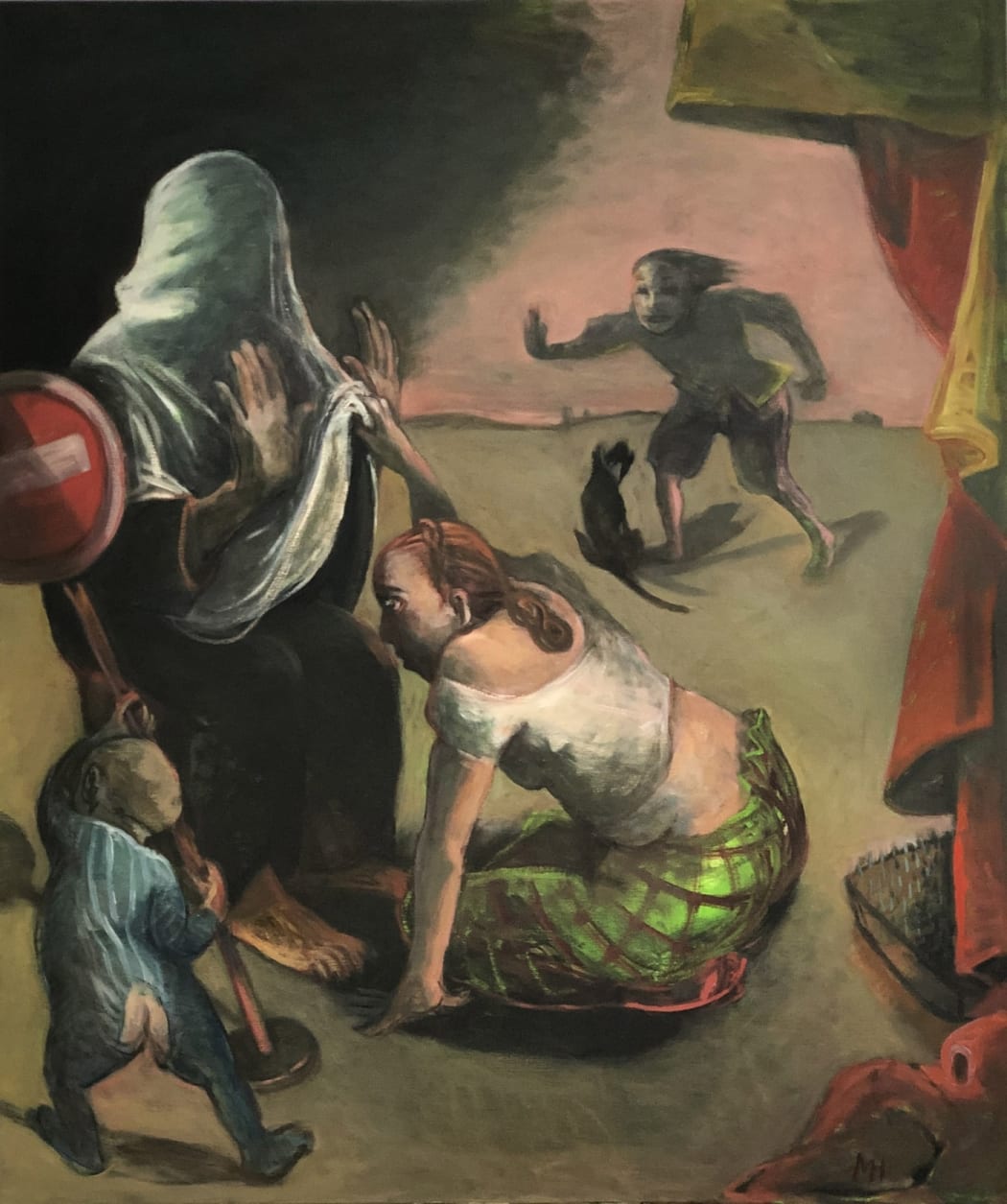 Marcelle Hanselaar At the Oracle of Limbo 4, 2019
Marcelle Hanselaar At the Oracle of Limbo 4, 2019Kafka’s Influence on Contemporary Art
Alienation, Transformation, and AbsurdityFranz Kafka, the master of existential unease and surreal storytelling, remains one of the most influential figures in 20th-century literature, with his ideas continuing to ripple across contemporary art. His works, such as The Metamorphosis and The Trial, delve into themes of alienation, absurdity, transformation, and oppressive systems, creating a "Kafkaesque" lens through which to explore the complexities of human existence. These themes have profoundly shaped the practices of contemporary artists, who transform Kafka’s literary vision into compelling visual narratives. At Aleph Contemporary, artists such as Archie Franks, Christy Burdock, Ben Westley Clarke, Alexander Adams, Marcelle Hanselaar, and Chris Burns channel Kafka’s legacy, producing works that grapple with ambiguity, power, and the fragility of identity. This essay explores how Kafka’s enduring influence resonates in their art, offering collectors a chance to engage with pieces that are as conceptually rich as they are emotionally evocative.
-
 Lucie Winterson - Phusis, 2022
Lucie Winterson - Phusis, 2022The Space Between Abstraction and Representation
A Guide for New CollectorsArt that occupies the space between abstraction and representation offers a captivating blend of clarity and ambiguity. These works invite viewers to recognise traces of the familiar while opening the door to boundless interpretation through abstraction. For new collectors, this genre offers a unique opportunity to acquire pieces that are both visually compelling and deeply thought-provoking. Balancing the emotional immediacy of abstraction with the conceptual grounding of representation, artists like Gordon Dalton, Lindsay Mapes, Polly Morgan, and Lucie Winterson exemplify the rich potential of this liminal space. This article explores how these artists, alongside key philosophical ideas, can guide you into building a meaningful collection.
-
Three Things About Abstraction
Understanding Its Evolution and Visual LanguageAbstraction is one of the most revolutionary and enduring forces in the history of art, reshaping how we perceive and engage with visual expression. By moving beyond representation, abstract art creates a universal language of colour, form, and composition that invites viewers to interpret meaning for themselves. From its roots in the early 20th century to its continued relevance in contemporary practice, abstraction remains a space for innovation and introspection. This article explores three key aspects of abstraction—its evolution, its visual language, and its ability to engage the viewer—offering a deeper understanding of why abstraction continues to captivate and challenge us. -
 Rebecca Meanley - Triptych Red Ground and Blue Distemper, 2019
Rebecca Meanley - Triptych Red Ground and Blue Distemper, 2019How to Interpret Abstract Art
Unlocking the Power of Visual AmbiguityInterpreting abstract art is both an intellectual challenge and an emotional journey. Unlike representational works that mirror the physical world, abstract art shifts the focus to colour, form, texture, and composition, inviting viewers to engage on a deeper, often personal level. Its ambiguity is its strength, offering freedom from fixed narratives and the opportunity to connect with an artist’s inner vision or one’s own interpretations. Whether navigating the haunting semi-abstractions of Leon Spilliaert or the dynamic energy of Kandinsky’s compositions, abstract art calls for an open mind, a willingness to explore, and an appreciation for its limitless possibilities.
-

Pre Exhibition Interview with Bob Davison
Studio VisitIn a tranquil Gloucestershire studio surrounded by specimen trees and a flourishing garden, Bob Davison creates art that bridges the gap between observation and abstraction. His works, featured in the upcoming solo exhibition About Looking at Aleph Contemporary in Stroud from 7 February to 22 March 2025, showcase his mastery of painting. Drawing inspiration from nature, his garden, and the Cotswold landscapes, Davison’s paintings invite viewers to slow down and explore the transient beauty of the world through layers of colour, texture, and intricate mark-making. This exhibition provides focus on how we perceive and experience contemporary art.
-

I Want to Be an Art Curator
A Vision for Curatorial Practice in GalleriesBecoming an art curator is a journey into the heart of creativity, blending artistic vision with organisational prowess. Whether working in public galleries to educate and inspire or in commercial spaces like Aleph Contemporary to showcase cutting-edge contemporary art, curators play a pivotal role in shaping how art is experienced. This essay delves into the multifaceted responsibilities of curators, their pathways to success, and the transformative power of curation in both public and private spheres. -
Paul Klee and the Poetics of Painting
Insights into His Influence on Modern Art and PhilosophyPaul Klee’s philosophy of painting reshaped modern art, blending abstraction, philosophy, and poetic revelation. Discover how his work continues to inspire contemporary artists and engage with the human condition.
-
Art Beyond Trends
The Philosophy of Belief-Based CreationArt is not a product to fit market trends but an authentic expression of belief. Explore how belief-based art challenges traditional marketing, draws on philosophical insights, and redefines the role of contemporary art. -
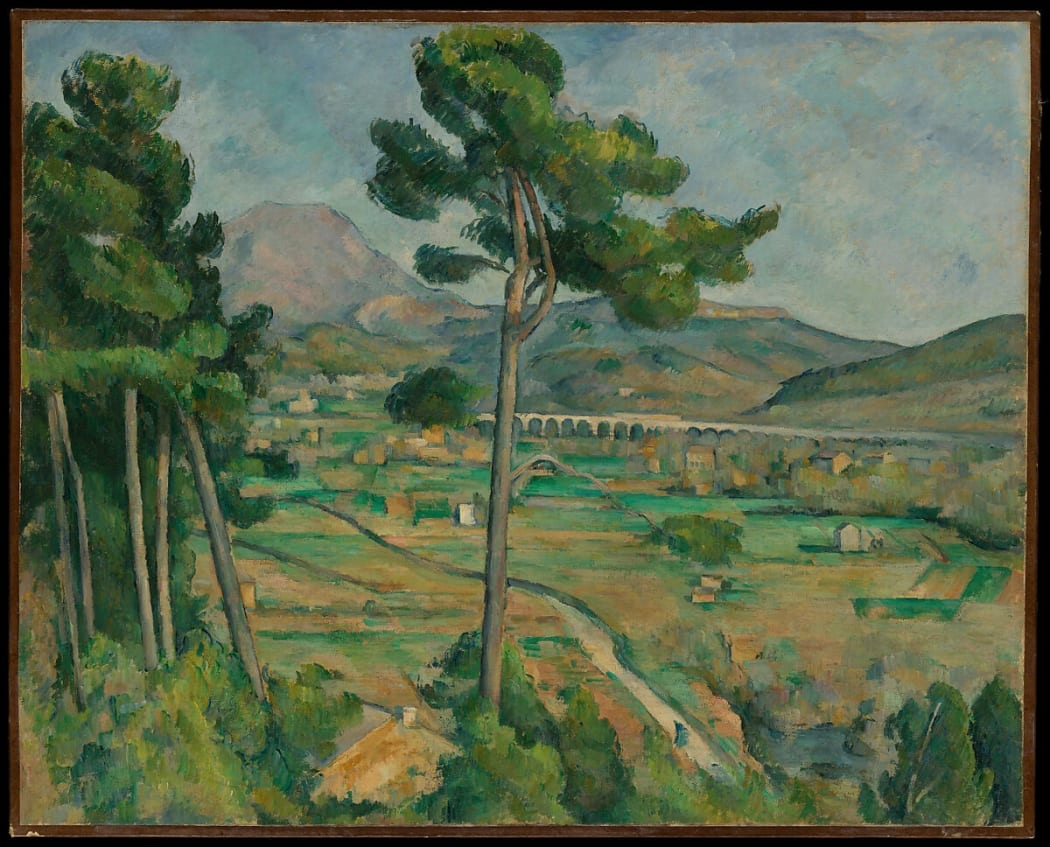 Mont Sainte-Victoire and the Viaduct of the Arc River Valley | Metropolitan Museum
Mont Sainte-Victoire and the Viaduct of the Arc River Valley | Metropolitan MuseumCézanne and the Act of Creation
How Cézanne’s Philosophy of Painting Reshaped Modern ArtPaul Cézanne revolutionised modern art with his philosophy of painting as an act of creation, not imitation. At Aleph Contemporary, we celebrate his enduring legacy, showcasing contemporary art that connects his pioneering vision to today’s dynamic artistic practices.
-
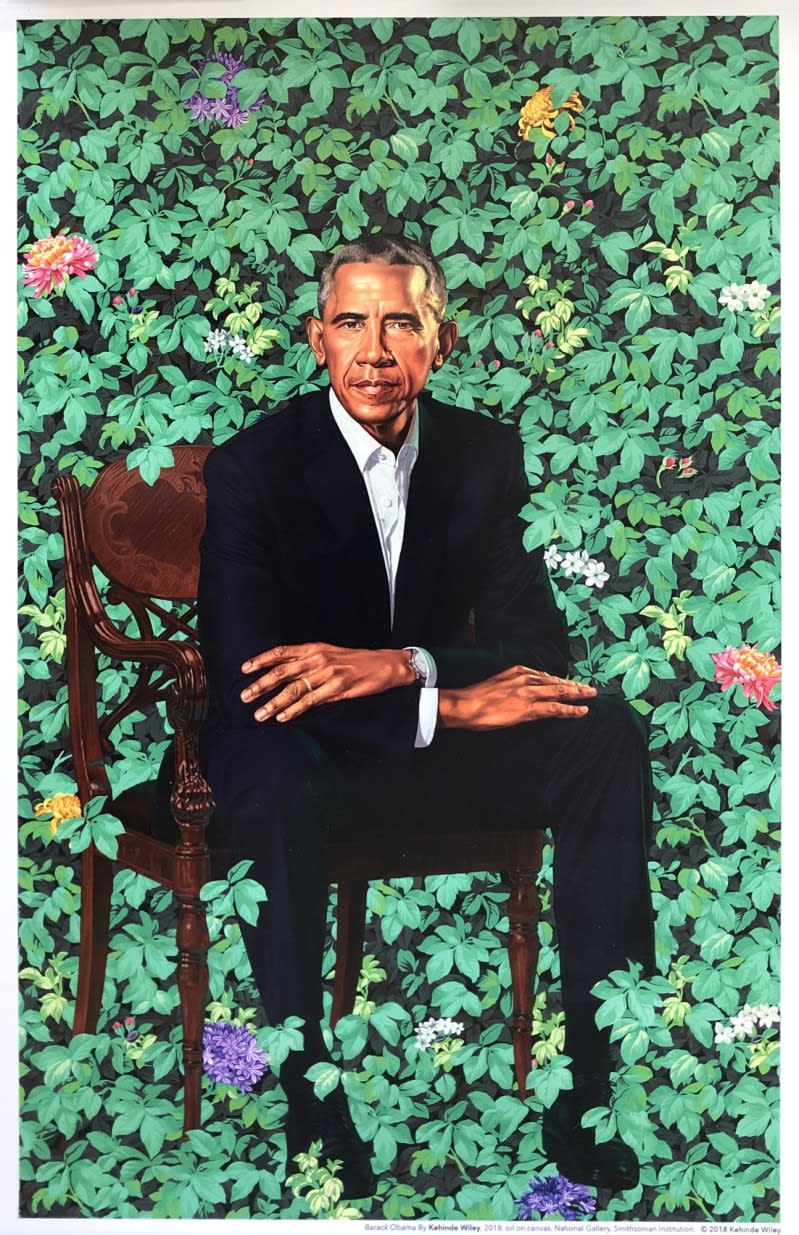
How Contemporary Art Reflects the Human Condition
Examining How Contemporary Artists Portray Human ExperiencesAt Aleph Contemporary, we believe art is a mirror to the human condition, offering insights into our shared experiences and unique perspectives. Our curated collections celebrate how contemporary artists explore identity, emotions, and societal challenges, crafting thought-provoking works that engage with the complexities of modern life. Join us as we delve into the transformative power of art to connect, question, and illuminate the essence of being human. -
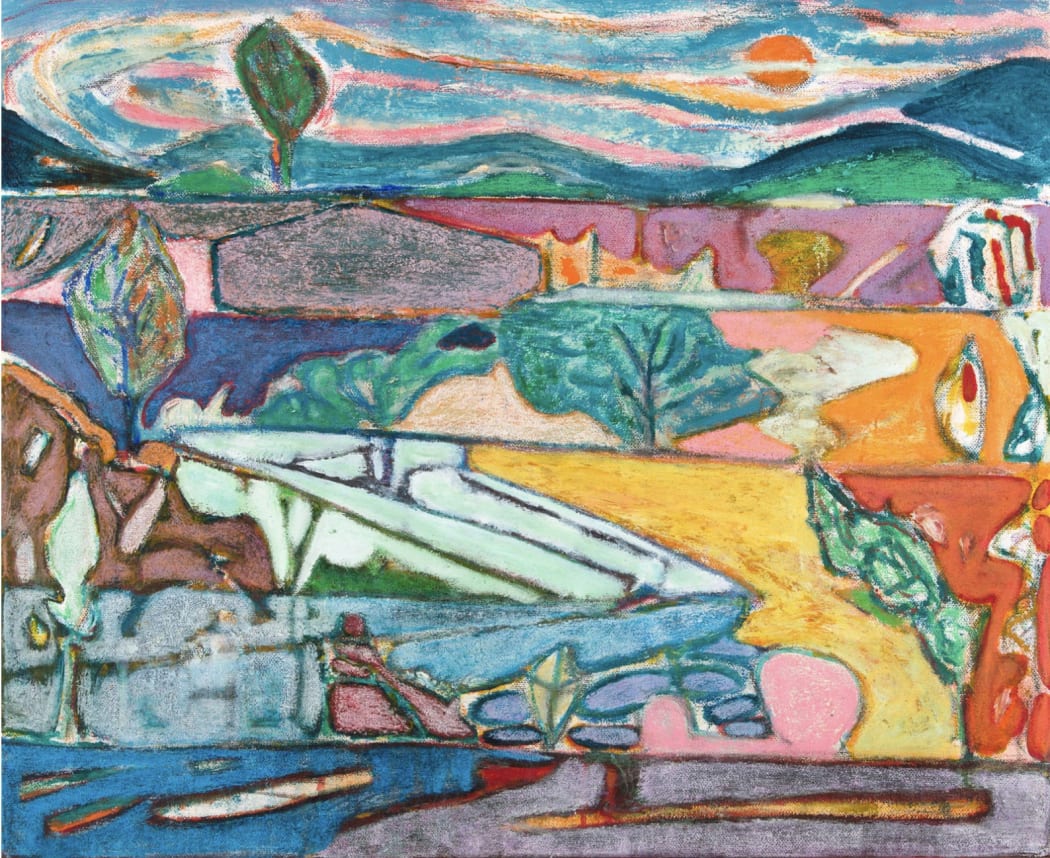 Gordon Dalton British, b 1970 Range Life, 2023
Gordon Dalton British, b 1970 Range Life, 2023How Art Breaks Utilitarian Biases
The Philosophical Argument for Art’s Role Beyond PracticalityArt has long been perceived by some as a luxury, peripheral to the essential functions of society. This utilitarian perspective evaluates art based on its practical contributions, often overlooking its profound impact on human experience and societal development. However, a deeper philosophical exploration reveals that art transcends mere functionality, playing a crucial role in shaping our understanding of the world and ourselves. -

Why Britain’s Middle Class Is Turning Away from Art
And Why It MattersThe British middle class has long been a cornerstone of cultural engagement, supporting art and ideas that shape society. However, recent years have seen a troubling decline in their connection with contemporary art, with local art galleries, contemporary art galleries, and public art galleries and museums increasingly overlooked. This disengagement not only diminishes the vibrancy of the art world but also risks silencing a vital societal voice. How has this shift come about, and what can be done to rekindle the middle class's role as cultural patrons and champions?
-
Transform your living space into a vibrant showcase of personal expression with a contemporary art gallery wall. From mixing mediums to integrating personal pieces, this guide offers 7 essential tips to help you curate a stunning, cohesive, and deeply personal art display. Let your walls tell your story while celebrating the dynamic world of contemporary art.
-
In conversation with Barnie Page
5 questions on Art and InspirationWe caught up with Barnie Page, curator of the Aleph Contemporary 2024 Summer Exhibition, to explore his decade of experience in contemporary art curation. From inventive projects blending art with daily life to celebrating Stroud’s vibrant artistic community, Barnie shares insights into his creative process, inspirations, and the unique charm of the Five Valleys that influences his work.
